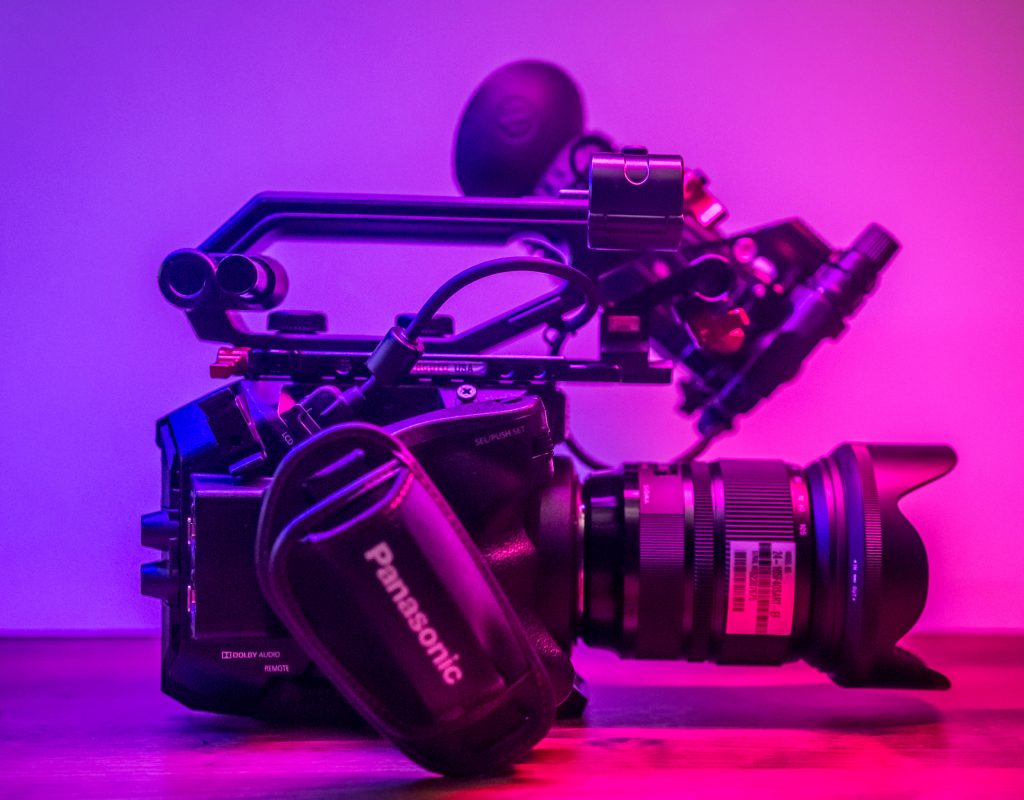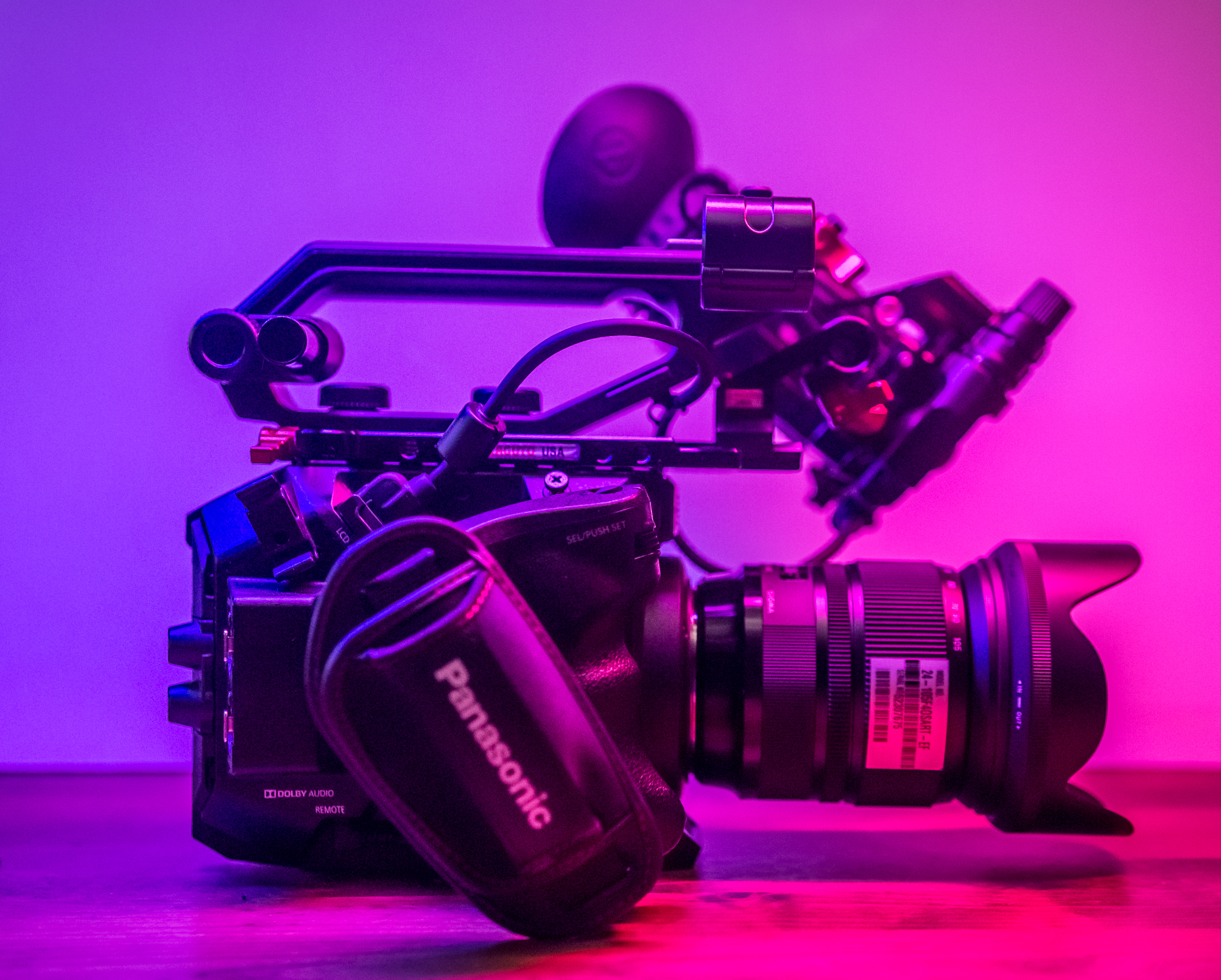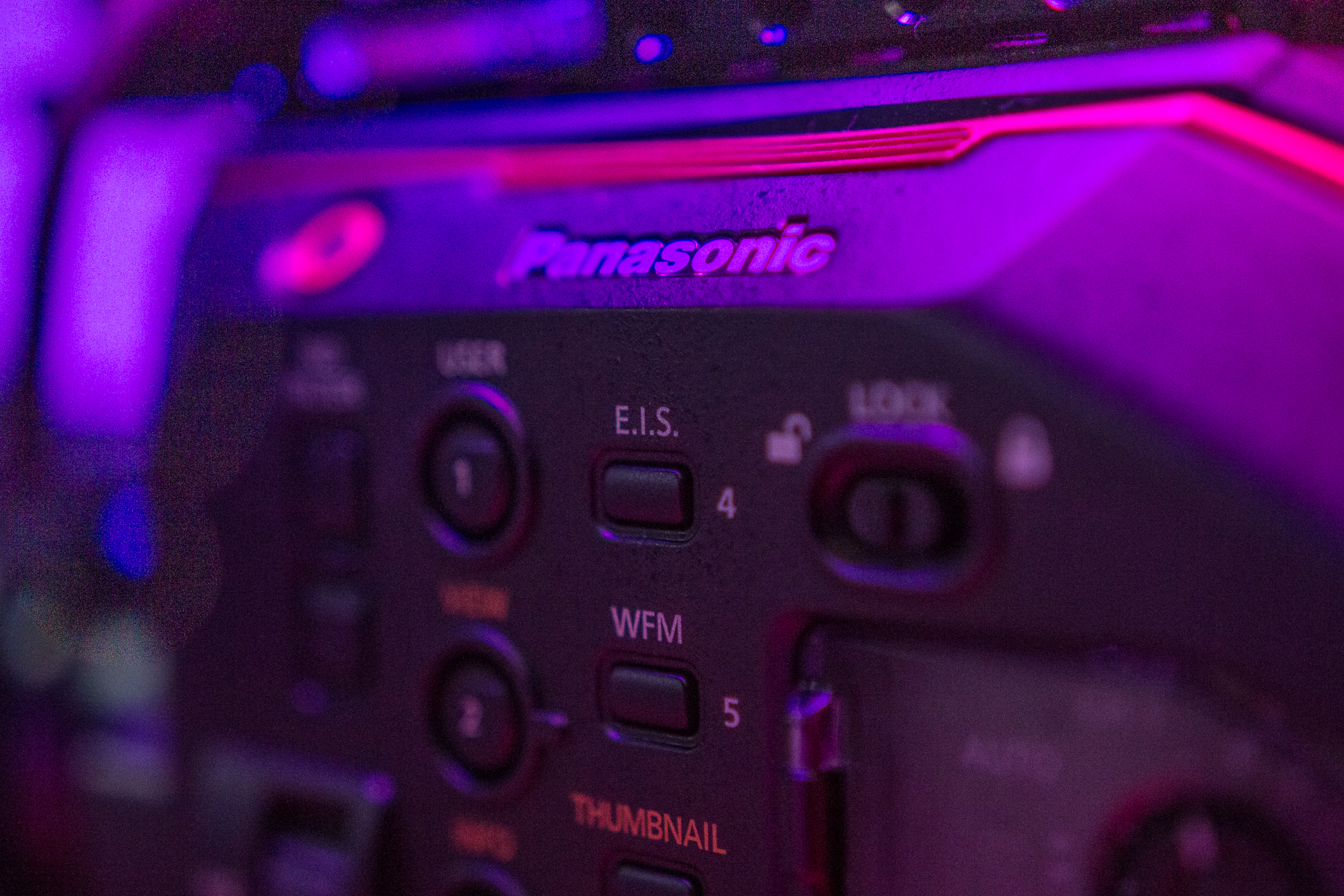There I was in my office packing and planning for a network shoot. Before me, sat a handful of cameras and accessories. Do I bring this or that? What will be used most and what will get me out of a jam if we shoot well into the night? It was a dark story theme and I had the feeling the producers wanted the footage to reflect the nature of the story. So I made a choice to bring the Panasonic EVA1 with me even though it added unnecessary bulk to a very tightly packed truck. Later, I discovered I had chosen wisely.
Then something else peculiar happened. We needed additional broll of the subject and the producer, who does not live or work in my area, request the Panasonic EVA1. They did not ask for it by name but by the footage. They wanted me to shoot on the camera I used at the end of the of a very long shooting day. “Shoot on the camera you shot with for the parking lot sequence” is what they said.
This is proof enough to me Panasonic made a hit with the EVA1. Now, I’m not going to get into the hyper-technical review my PVC colleague already posted earlier this year. That is not my style. Yes, I can get buried in technical details and when it comes to shooting I want to know the tech so I can forget it and shoot with confidence. I want to feel it.
The EVA1 can record camera can record 4K, UHD and HD at up to 60p in a 4:2:2 10-bit codec and up to 240 frames per second in 2K and HD (with a sensor crop). It has a native EF-mount, built-in ND with 2, 4, and 6 stops plus an IR filter, Electronic Image Stabilization (EIS), and Dual Native ISO of 800 and 2500. Panasonic also threw in their V-Log/V-Gamut capture to deliver a high dynamic range and great color rendition.
THE EVA1 5.7K SENSOR
This sensor delivers cinematic images with ease. The colors, the skin tones, and the dynamic range are all pleasing and what I want straight out of a camera. When I bring the footage into an NLE or DaVinci Resolve I can choose to push or pull it, the codec will handle it, and usually, I just put an Arri C-Log LUT on and tweak the details I prefer. Can you record 5.7K in camera? Nope, you cannot, but Panasonic now has EVA1 version 2 firmware out in the wild for everyone to use. This allows the EVA1 to output a 5.7K raw signal which can be recorded with an Atomos monitor/recorder. This will be the only way to capture that 12-bit 5.7K footage… that was wrong. I meant to say 10-bit raw 5.7K footage.
V-Log
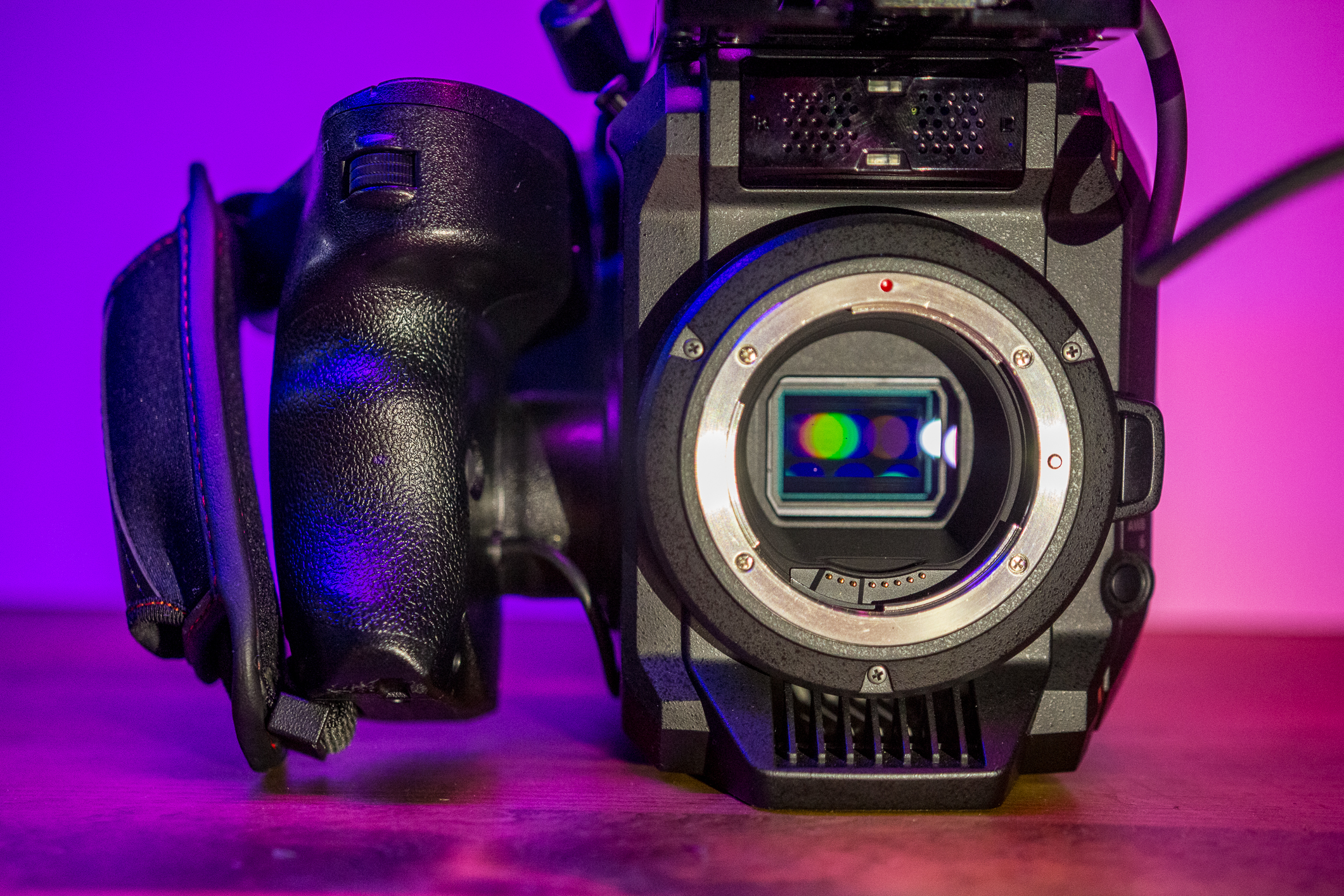 I love V-log and the image it gives one to color grade. The 10-bit color depth is more than enough for this camera’s internal recording capabilities along with Panasonic’s log curve. I found the footage pleasing without any manipulation too. The short of it is this: the v-log is smooth from the images brightest areas to the darkest and this makes for easy manipulation into a Rec709 deliverable.
I love V-log and the image it gives one to color grade. The 10-bit color depth is more than enough for this camera’s internal recording capabilities along with Panasonic’s log curve. I found the footage pleasing without any manipulation too. The short of it is this: the v-log is smooth from the images brightest areas to the darkest and this makes for easy manipulation into a Rec709 deliverable.
The 4K
Is 10-Bit and not recorded on a computer performance killing codec. This is helpful for those who have older less speedy computers. I found the 4K absolutely beautiful and organic looking. I find it a very smooth 4K. If you want a cinematic look then the Panasonic EVA1 will not disappoint at all. As a father of a 16-month-old daughter trust me when I say I shoot a ton of home videos. The EVA1 produced amazing skin tones and its small size meant my child quickly lost interest in the camera in my hands and kept on doing whatever she was doing before I started shooting video of her. The baby test is proof the EVA1 will be a great documentary camera.
Monitor
Panasonic sent their EVA1 to me with a Zacuto Loupe attached to the camera’s monitor. I used the camera with and without the Zacuto Loupe. First off, the loupe is robustly built and a touch too big for the Panasonic EVA1, but absolutely necessary is shooting outside with the camera. Inside shooting, the monitor is fine but a little small. Yet, what can we do? It’s a small camera and a small monitor seems right for the EVA1. If shooting without the Atomos Monitor / Recorder then I’d definitely pick up a decent loupe. It’s easy to hold the camera at chest height and look through it.
Does the EVA1 need an EVF on the rear like a C300 or Sony FS5? I do not think so. I think this camera is best held close to the body where a shooter can hold is steady. Plus, there are so many different options out in the world which can make the monitor easier to view in bright daylight. For my old eyes, I would buy the Zacuto and move on.
The Focus Assist. The EVA1 does have the VariCam style focus squares. I like this feature. Some prefer the peaking or colored peaking for their chosen focus Assist. This camera has all of it allowing you to chose what you want in your monitor.
Electronic Image Stabilization
Instead of relying on lens guts to stabilize one’s video image Panasonic has decided to stabilize the image coming into the camera. This can be valuable for those shooters using PL glass or older vintage lenses made before image stabilizers were apart of the guts of the lens like in Canon’s 70-200m L series IS.
EF Lens Mount
Yep, this camera only comes with a Canon EF lens mount. Bummer, right? Wrong. You are not stuck with a Canon EF mount forever. If you want you can pick up Wooden Camera’s PL adapter for the Panasonic EVA1. While the aircraft aluminum PL mount is a modification for the EVA1, instead of a simple lens adapter, it might be reserved for the brave camera operator who is accustom to make changes to the original EVA1.

Long Battery Life
This is a must especially for any camera which seems perfectly fit for long hours of production. I especially love that this camera uses smaller batteries instead of more power hungry cameras like the Panasonic VariCam LT, which is a great camera but requires a good set of V-mounts or Gold mounts to get through a full day. The smaller, though specific to the EVA1, batteries also mean this camera can be carried in a Pelican 1510 case and you can pack just about everything needed for a good day of work.
Dual ISO
I personally love to see the dual ISO feature, originally found in Panasonic’s VariCam35, is also in the EVA1. This camera’s two ISOs are 800 and 2500. The ability to jump to a clean higher ISO is a must for the solo shooter and can help extend the twilight shooting after a long day of broadcast work. Now, the EVA1 does not have quite as high of a Dual Base ISO as the VariCam LT, which is 800 / 5000 ISO) but what it does have is more than adequate for a camera this size. When a shooter combines the Dual Base ISO with a lens like Sigma’s 18-35mm f1.8 or Angenieux’s 15-40mm T2.0 then you can rest assured you and your camera will see well into the night.
That Panasonic Menu
Man, I really wished Panasonic and Sony could further simplify their camera menus. The EVA1 is not the worst offender I have encountered but I really just want quick and easy. The good thing is this camera does not need a whole lot of menu diving to find the settings you want to use.
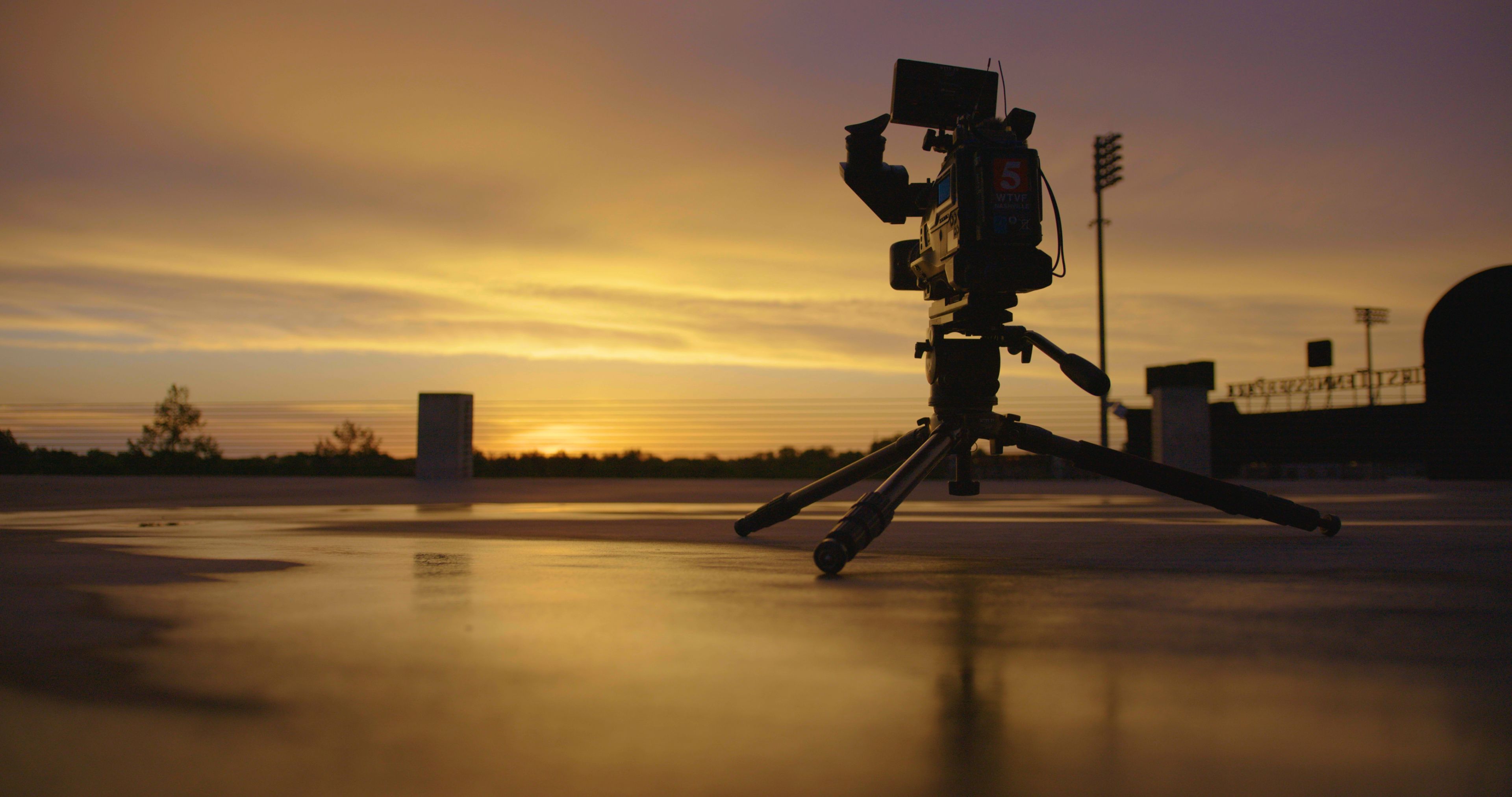
So Damn Easy To Use
To sum up my feelings on the Panasonic EVA1 I will say this is a very easy to the camera to shoot with and make great images. The ergonomics of the camera is top-notch when shooting to internal media and just a little bit awkward when shooting with a monitor/recorder like an Atomos. I could see myself using the EVA1 more and more on network broadcast work because the camera helped me get into the action more than watching it from a voyeur’s perspective.
The EVA1 is directly competing against Canon’s C200, Sony’s FS5, and Blackmagic’s URSA Mini Pro. This section of the market is stiff competition and Panasonic has a little bit of an uphill climb to get a loyal shooter to leave his or hers camera manufacturer of choice. Yet, Panasonic has a long history in broadcasting so they packed their EVA1 full of broadcast necessary features like 10-bit 4:2:2 HD codec which most networks require for broadcast work. The Canon C200 needs an external monitor to be broadcast compliant and who really wants a bulky recorder attached to a small camera when one is run and gun shooting.
Never have I received a request to use a specific camera before from a producer. Usually, if the footage looks good then one does not hear anything at all. So, chalk it up. I will be shooting on this camera way more often.

- Super 35mm 5.7K Sensor
- Dual Native ISO
- EF Lens Mount
- Records 4K up to 60 fps
- Records 2K up to 240 fps
- 5.7K Raw Output via BNC
- 10-Bit, 4:2:2 Processing
- Records to SD Cards
- V-Log and V-Gamut Capture
- SDI and HDMI Video Outputs
In S35 Mode 4096 x 2160 (4K) .MOV
- 422 Intra 400 Mbps (VBR) 29.97p, 24p, 25p, 23.98p (Firmware Update)
- 422 LongGOP 150Mbps (VBR) 29.97p, 24p, 25p, 23.98p
- 420 LongGOP 150M (VBR) 59.94p, 50
- 420 LongGOP 100M (VBR) 29.97p, 25p, 23.98p
In S35 Mode 3840 x 2160 (UHD) .MOV
- 422 Intra 400 Mbps (VBR) 29.97p,25p, 23.98p (Firmware Update)
- 422 LongGOP 150Mbps (VBR) 29.97p, 25p, 23.98p
- 420 LongGOP 150M(VBR) 59.94p, 50p
- 420 LongGOP 100M (VBR) 29.97p, 25p, 23.98p
In S35 Mode 2048 x 1080 (2K) .MOV
- 422 Intra 200 Mbps (VBR) 59.94 50p (Firmware Update)
- 422 Intra 100Mbps (VBR) 29.97p, 24p, 25, 23.98p (Firmware Update)
- 422 LongGOP 100Mbps (VBR) 59.94p, 50p
- 422 LongGOP 50M (VBR) 29.97p, 24p, 25p, 23.98p
- 420 LongGOP 100M (VBR) 59.94p, 50p
- 420 LongGOP 50M (VBR) 59.94p, 50p
In S35 Mode 1920 x 1080 (FHD) .MOV
- 422 Intra 200 Mbps (VBR) 59.94 50p (Firmware Update)
- 422 Intra 100Mbps (VBR) 29.97p, 24p, 25, 23.98p (Firmware Update)
- 422 LongGOP 100Mbps (VBR) 59.94p, 50p
- 422 LongGOP 50M (VBR) 29.97p, 25p, 23.98p
- 420 LongGOP 100M (VBR) 59.94p, 50p
- 420 LongGOP 50M (VBR) 29.97p, 25p, 23.98p

Filmtools
Filmmakers go-to destination for pre-production, production & post production equipment!
Shop Now